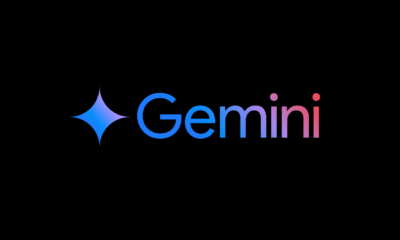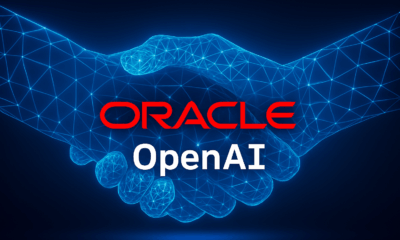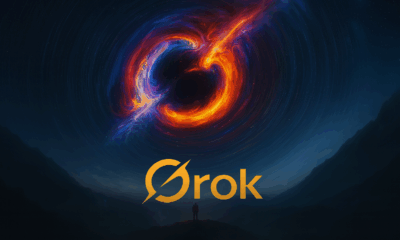News
Tesla’s Punitive Autopilot: How Instant Strikes Disrupt Driver Inattention

- Share
- Tweet /data/web/virtuals/375883/virtual/www/domains/spaisee.com/wp-content/plugins/mvp-social-buttons/mvp-social-buttons.php on line 63
https://spaisee.com/wp-content/uploads/2025/07/tesla-1000x600.png&description=Tesla’s Punitive Autopilot: How Instant Strikes Disrupt Driver Inattention', 'pinterestShare', 'width=750,height=350'); return false;" title="Pin This Post">
Tesla has quietly weaponized its Autopilot system, transforming it into a behavior-driven punishment tool that instantly penalizes inattentive drivers. With strikes, suspensions, and even car-wide lockouts—instantly triggered by neglect—Tesla’s instantaneous “guilty‑until‑proven‑pay‑attention” model marks a radical shift in enforcing safety behind the wheel.
The Strike System: Instant Feedback, Immediate Consequences
The heart of this enforcement lies in Tesla’s strike system. Operating under Level 2 automation, Tesla requires constant driver supervision—hands on the wheel, eyes on the road. When the system detects inattentiveness—such as a driver removing torque from the steering wheel or diverting gaze—it issues escalating audio-visual alerts. If warnings are ignored, the car issues a “strike” and in severe cases, disables Autopilot or Full Self-Driving (FSD) capabilities immediately.
Tesla has refined this punitive feedback loop over time. Three to five strikes—determined by model and camera configuration—result in automatic suspension of self-driving features, sometimes dubbed “FSD jail.” A warning appears on the display: continued improper use will remove FSD permanently from the vehicle until behavior improves.
This is not simply a temporary timeout. Depending on the version of software, users can face week-long lockouts or longer. The reset process is opaque; Tesla doesn’t clearly define when or how a user can regain access. In effect, the system operates like a traffic court with no judge or hearing—only a programmed enforcement arm that does not offer appeals.
How the System Works, Step by Step
1. Driver Monitoring: Tesla cars use steering torque sensors and, in newer models, in-cabin cameras to monitor the driver’s engagement. If the system detects a lack of force on the wheel or gaze diversion, it begins issuing warnings.
2. Escalating Warnings: These include subtle visual cues, such as blinking lights or messages on the dashboard, followed by increasingly urgent audio alerts.
3. Strike Issued: Continued noncompliance triggers a strike, which is recorded in the vehicle’s software.
4. Strike Tracking: The vehicle keeps a tally of strikes, visible in the Autopilot interface. Strikes are linked to the vehicle, not the driver profile, meaning all users of the car share the same disciplinary record.
5. Suspension Triggered: Upon reaching the strike limit, the system deactivates Autopilot or FSD features for a fixed duration.
6. Time-Based Recovery: Strikes are removed on a weekly basis if the driver maintains proper behavior, but users have no ability to accelerate the process or appeal unfair penalties.
This system is designed to be autonomous and unyielding. The only way to reset it is through time and improved behavior, echoing a behavioral psychology model where negative reinforcement shapes compliance.
Advantages of the Strike-Based Enforcement Catalyst
The most compelling advantage of Tesla’s system is its immediacy. Unlike conventional approaches that rely on post-incident reviews or passive alerts, Tesla’s mechanism creates a direct cause-and-effect relationship between inattentiveness and consequences. It doesn’t merely suggest better behavior; it enforces it.
This has the potential to significantly improve road safety. Human error—often due to distraction—is a leading cause of vehicle accidents. Tesla’s system aims to mitigate this risk by nudging users toward sustained engagement. The knowledge that a single moment of inattention could disable a valuable feature may incentivize better habits.
Moreover, this system helps Tesla manage regulatory scrutiny. By demonstrating that the company is not allowing drivers to misuse Autopilot or FSD, Tesla can argue it is taking proactive steps to enforce responsible use. This could prove crucial as federal and state transportation authorities increase their oversight of autonomous systems.
Disadvantages: Collateral Impact, Controversy, and Overreach
Despite its safety benefits, the system is not without criticism. Many users have reported receiving strikes even while being attentive, suggesting that the system can be overly sensitive or flawed. For instance, drivers who apply light pressure to the wheel may still be flagged as disengaged, and glare or camera misreads can trigger false gaze diversions.
These false positives can be deeply frustrating, especially when they result in the loss of expensive and highly anticipated features like FSD. Tesla’s lack of an appeals process exacerbates this frustration. There’s no human to contact, no support line to plead your case—just a car that decides when you are no longer trustworthy.
Additionally, the system’s punitive nature can be jarring. A week-long suspension is a significant penalty for what may be a minor or misunderstood infraction. While the system is intended to encourage safe behavior, it can also punish users in complex scenarios—like adjusting a sun visor or glancing at a GPS—that don’t necessarily equate to dangerous driving.
Another issue is the communal penalty system. Since strikes are tied to the vehicle and not individual profiles, one driver’s misbehavior affects all users. In families or shared vehicles, this can create tension and unfair outcomes.
Reflection: A Disruptive Safety Model with Trade-Offs
Tesla’s approach is undeniably innovative. It breaks from the mold of passive safety systems by introducing an automated, consequence-driven model that seeks to align driver behavior with system expectations. In some ways, it mirrors the rise of algorithmic enforcement in other areas—credit scoring, social media bans, ride-sharing ratings—where software acts as both judge and enforcer.
But innovation without balance can become authoritarian. Tesla’s model risks alienating users if it does not incorporate nuance, flexibility, and transparency. A smarter strike system might include context-awareness—distinguishing between a genuine lapse and a brief moment of distraction. It could also allow drivers to appeal or explain behavior, especially in edge cases.
Looking ahead, Tesla could improve its system by implementing tiered penalties. Rather than removing FSD for an entire week, it could reduce speed limits or require extra driver confirmations. It could also offer real-time feedback explaining what caused a strike, helping users learn and adjust.
Ultimately, Tesla’s strike system is a bold experiment in behavioral engineering. It reflects the company’s belief that technology should not only serve but shape us. Whether this vision leads to safer roads or frustrated drivers will depend on how well Tesla balances enforcement with empathy, precision with understanding.
Conclusion
Tesla’s instant strike-and-suspend model turns Autopilot into a digital disciplinarian—a machine that rewards focus and punishes distraction. It is a disruptive shift that reimagines automotive safety, aligning with modern principles of accountability and real-time feedback. But to be truly effective, it must evolve beyond blunt force enforcement. Only then can Tesla realize its promise of intelligent, human-centric autonomy on the road.
AI Model
How to Prompt Nano Banana Pro: A Guide to Creating High-Quality Images with Google’s AI

Why Nano Banana Pro Matters
Nano Banana Pro is Google DeepMind’s most advanced image generation model, built on the powerful Gemini 3 Pro architecture. It delivers high-resolution outputs (up to 4K), understands complex prompts with layered context, and performs exceptionally well when generating realistic lighting, textures, and dynamic scenes. It also supports image referencing — letting you upload photos or designs to guide the visual consistency.
In short, it’s not just a toy — it’s a tool for designers, marketers, illustrators, and creatives who want to build professional-grade images fast. But to unlock its full potential, you need to learn how to prompt it properly.
Prompting Basics: Clarity Beats Cleverness
The secret to powerful results isn’t trickery — it’s clarity. Nano Banana Pro doesn’t need keyword spam or obscure syntax. It needs you to be specific and structured.
Here are the key rules to follow:
- Be descriptive, not vague: Instead of “a cat,” write something like “a ginger British shorthair cat sitting on a marble countertop under soft morning light.
- Layer your descriptions: Include details about the subject, setting, atmosphere, materials, lighting, style, and mood.
- State your format: Tell the model if you want a photo, digital painting, cinematic frame, 3D render, infographic, comic panel, etc.
- Use reference images: Nano Banana Pro supports multiple uploads — useful for matching styles, poses, faces, characters, or branding.
This is how professionals prompt: not by hacking the system, but by being precise about what they want.
Crafting Prompts by Use Case
📸 Realistic Photography
Want a product photo, fashion portrait, or cinematic still? Then your prompt should include lens type, lighting style, subject age, composition, and color grading.
Example:
Professional studio portrait of a 35-year-old woman in natural light, soft cinematic lighting, shallow depth of field, 85mm lens look, natural skin tones, soft shadows, clean background, editorial style.
Another example:
A 3/4 view of a red sports car parked in a luxury driveway at golden hour, realistic reflections, soft shadows, DSLR-style image, bokeh background.
These prompt structures help the model replicate not just the subject but the feel of a professionally shot image.
🎨 Illustration, Comic Art, and 3D Concepts
If you want stylized work — like a retro comic, anime-style character, or matte painting — the style must be part of the prompt.
Example:
Comic-style wide cinematic illustration, bold black outlines, flat vibrant colors, halftone dot shading, a heroic female astronaut on Mars with a pink sky, dramatic lighting, wide aspect ratio.
More styles to try:
- Fantasy concept art, a medieval knight riding a dragon above stormy mountains, painted in the style of Frank Frazetta, high detail, dramatic lighting.
- Cyberpunk anime character in a rain-soaked Tokyo alley, glowing neon lights, futuristic fashion, overhead perspective, digital painting.
Tip: Reference known artistic styles (e.g., Art Nouveau, Impressionism, Pixar, Studio Ghibli) to guide the tone.
🔄 Editing Existing Images
Nano Banana Pro can also transform existing images by changing backgrounds, lighting, or adding/removing objects.
Examples:
Replace the background with a rainy city street at night, reflect soft blue and orange lights on the subject, keep original pose and composition, cinematic tone.
Add a glowing book in the subject’s hands, soft magical light cast on their face, night-time indoor setting.
Best practices:
- Use clear “before/after” language.
- Indicate what must stay unchanged.
- Specify the mood or lighting effect you want added.
Common Mistakes to Avoid
- Too generic: A prompt like “a girl standing” tells the model almost nothing. Who is she? Where is she? What’s the style?
- Keyword stuffing: Don’t use outdated tricks like “masterpiece, ultra-detailed, trending on ArtStation.” They’re mostly ignored.
- Ignoring context: Don’t forget to describe how elements relate (e.g. “holding a glowing orb” vs. “glowing orb floating behind her”).
- Unclear intent for text/logos: If you want branded material, say exactly what the logo or label should look like, and where.
Prompt Templates You Can Use Right Now
Try adapting these for your needs:
- “Cinematic 4K photo of a mountain climber reaching the summit at sunrise, orange glow on snowy peaks, lens flare, dramatic sky.”
- “Retro-futuristic 3D render of a diner on Mars, neon signs, dusty surface, stars in the background, warm ambient light.”
- “Isometric vector-style infographic showing renewable energy sources, solar, wind, hydro, with icons and labels.”
- “Realistic photo of a smartwatch product on a floating glass platform, minimalistic white background, soft shadows.”
These prompts are short but rich in visual instruction — and that’s the key to strong output.
Going Further: Advanced Prompting Tips
- Use cinematic language: Words like “soft light,” “overhead shot,” “close-up,” “medium angle,” “shallow depth of field” guide the AI like a film director.
- Test with reference images: Upload an image of your brand, product, or character to maintain continuity.
- Iterate: If your first image isn’t right, adjust one or two variables (e.g., lighting, background, subject age) and regenerate.
- Define aspect ratios: Use “cinematic,” “vertical portrait,” “square crop” if you need a specific format.
- Stay natural: Write prompts like you’re briefing a professional illustrator or photographer.
Final Thoughts
Nano Banana Pro is one of the most powerful visual AI tools available — but it’s only as good as your prompts. Whether you’re an art director, a solo founder, or a content creator, learning to prompt well is the fastest way to unlock its full creative range.
Focus on clarity, visual language, and style specificity. Add references when needed. Think like a photographer, art director, or storyteller. The better your brief, the better the image.
Want more? Ask for our expanded prompt pack: 50+ ready-made formulas across categories like product design, sci-fi art, fantasy scenes, infographics, editorial portraits, and more.
AI Model
Qwen vs. ChatGPT — Which AI Assistant is Better — and For What

Why This Comparison Matters Now
Qwen, the large language model developed by Alibaba Cloud, has recently been gaining significant attention. The release of Qwen 2.5-Max and its successors has sparked comparisons across benchmarks covering reasoning, coding, long-context handling, and multimodal tasks. Meanwhile, ChatGPT continues to dominate as the default choice for many users who prioritize conversational quality, creative tasks, and ease of use. Comparing the two is increasingly important for anyone deciding where to invest their time, money, or infrastructure in 2025.
Let’s explore how Qwen and ChatGPT compare across major performance categories — and which model might suit your needs better.
Where Qwen Shines: Power, Context, and Flexibility
One of Qwen’s strongest features is its ability to handle long-context reasoning and document-heavy workflows. With larger context windows than many competitors, Qwen is particularly adept at analyzing long reports, writing consistent long-form content, summarizing legal or technical material, and managing multi-layered input without losing coherence. It’s a powerful tool for users who need depth.
Qwen also excels in structured logic and code-related tasks. In independent evaluations, it has shown impressive results in mathematical reasoning, data extraction, and code generation. For developers and technical users looking for an AI assistant to support real engineering workflows — rather than simply explain code snippets — Qwen is a highly capable alternative to established incumbents.
Multimodal and multilingual flexibility is another area where Qwen stands out. It supports text, image input, and multiple languages, enabling it to serve as a true assistant across varied communication and media formats. That’s particularly useful for global users or teams operating in bilingual or multilingual environments.
Finally, the open-source accessibility of Qwen is a major advantage. While not every version is fully open, many variants are freely available and can be run locally or fine-tuned. For users prioritizing data control, customization, or cost-efficiency, that’s a serious point in Qwen’s favor.
Where ChatGPT Excels: Conversation, Creativity, and Ecosystem
ChatGPT continues to lead when it comes to polish and user experience. Its conversational flow is smooth, stylistically natural, and often feels more human than any other model on the market. That’s invaluable for creative writing, ideation, storytelling, or any application that requires tone, style, and nuance. It’s also why many casual users prefer ChatGPT over more technical models.
ChatGPT’s integration with live data, APIs, and tools (depending on the version) provides a dynamic and extensible platform for users who need real-time insights or app-level functionality. If you’re looking for an assistant that can browse the web, generate code, search documentation, or plug into third-party services, ChatGPT is often the more mature choice.
Consistency, reliability, and safety mechanisms also remain a strength. For teams or individuals who don’t want to think about model drift, hallucination tuning, or backend parameters, ChatGPT offers a plug-and-play solution that’s hard to beat. It’s a tool that just works — and that simplicity matters more than benchmark scores for a wide audience.
The scale and maturity of ChatGPT’s ecosystem also give it a clear edge. From community guides to business integrations, apps, and workflows — it’s supported nearly everywhere, and that makes it easy to adopt regardless of your skill level.
Limitations and Trade-offs
That said, Qwen and ChatGPT each come with their own trade-offs.
Qwen, while powerful, sometimes lacks the fluency or stylistic finesse that makes ChatGPT feel so natural. It can hallucinate in edge cases, and while some versions are open-source, the most powerful iterations may still depend on Alibaba’s infrastructure, limiting portability for privacy-centric users.
ChatGPT, for its part, is a closed model, with cost barriers and fewer customization options. It also has a more constrained context window in some versions, making it less ideal for ultra-long documents or advanced reasoning across large data structures.
Which Model Should You Use?
If your work involves processing long documents, building tools, working with code, or requiring multilingual support — and you value the ability to run models locally or integrate them deeply — Qwen is an excellent fit. Its performance is strong, and it offers more technical freedom for advanced users.
If your needs are creative, conversational, or content-driven — and you want something intuitive, responsive, and polished out of the box — ChatGPT is still the best experience available today. It’s perfect for brainstorming, writing, email generation, and any task where clarity, creativity, and tone matter.
For enterprise teams, researchers, and power users — using both might be the optimal solution. Qwen can handle the heavy lifting in development and data, while ChatGPT takes care of interaction, presentation, and ideation.
Final Verdict
There’s no absolute winner in the Qwen vs. ChatGPT debate — only better fits for different tasks. Qwen brings muscle, flexibility, and context awareness. ChatGPT delivers fluency, elegance, and seamless usability.
In the AI race of 2025, the smartest move isn’t to pick a side — it’s to pick the right tool for the job.
News
Alibaba’s AI Coup: Qwen App Hits 10 Million Downloads in One Week — And the AI Wars Just Escalated

A Meteoric Debut for Qwen
Alibaba’s freshly launched Qwen app has crossed 10 million downloads in just its first seven days — a staggering adoption rate that places it among the fastest-growing AI applications globally. The explosive start signals more than consumer interest. It marks Alibaba’s transition from infrastructure giant to serious AI contender in the public arena.
Qwen Isn’t Just Another Chatbot
At the core of Qwen’s early success is its engine: the Qwen model family, developed in-house by Alibaba. These large language models (LLMs) are multimodal — capable of processing not just text, but also images, audio, and potentially video. Unlike other AI tools that remain sandboxed in niche applications, Qwen is designed as a true all-in-one assistant.
From drafting documents and summarizing reports to answering questions and managing multimedia tasks, Qwen is built to be useful — not just entertaining. And critically, it launched with a free-access model, eliminating the subscription paywall that often hinders adoption in early-stage AI apps.
From E-Commerce to Everyday AI
This launch represents a clear strategic pivot for Alibaba. Historically known for e-commerce dominance and its powerful cloud infrastructure (via Alibaba Cloud), the company is now positioning itself as a top-tier player in the AI space — not just at the backend, but at the consumer-facing layer.
Qwen is not just a product — it’s a platform play. It ties into Alibaba’s cloud resources, shopping ecosystem, productivity tools, and eventually, financial services. By releasing it as a standalone, viral consumer app, Alibaba is laying the groundwork for a much bigger AI ecosystem play.
Global AI Ambitions, Starting in Asia
While Qwen’s initial rollout is concentrated in China and Southeast Asia, there are clear signs Alibaba intends to push the app globally. With Western alternatives like ChatGPT, Claude, and Gemini facing geopolitical and regulatory barriers in some regions, Qwen could capitalize on being both regionally accessible and locally optimized.
Additionally, the app’s early traction reflects strong demand for AI solutions tailored to regional languages, customs, and ecosystems. As Chinese tech continues to look outward, Qwen may become a cultural as well as a technological export — one capable of competing head-to-head with the biggest names in global AI.
The Next Phase: Monetization and Market Power
Crossing 10 million downloads in a week is only the first milestone. The real test lies in retention, monetization, and integration. Alibaba will now focus on converting casual users into power users, offering advanced features, integrating payments, cloud-based services, and potentially leveraging the app to strengthen its broader commercial footprint.
There is already speculation that Qwen could evolve into the “WeChat of AI” — a super-assistant that combines messaging, productivity, shopping, and finance in a single intelligent interface. If that vision materializes, Alibaba may have just positioned itself as the most powerful AI consumer company outside the West.
Final Thought
The Qwen launch is not just about downloads. It’s about direction. Alibaba has made its move — not with hype or vague roadmaps, but with a working, useful, and widely adopted AI assistant. The global AI race is officially more competitive than ever.
-

 AI Model2 months ago
AI Model2 months agoHow to Use Sora 2: The Complete Guide to Text‑to‑Video Magic
-

 AI Model4 months ago
AI Model4 months agoTutorial: How to Enable and Use ChatGPT’s New Agent Functionality and Create Reusable Prompts
-

 AI Model5 months ago
AI Model5 months agoComplete Guide to AI Image Generation Using DALL·E 3
-

 AI Model5 months ago
AI Model5 months agoMastering Visual Storytelling with DALL·E 3: A Professional Guide to Advanced Image Generation
-

 AI Model3 months ago
AI Model3 months agoTutorial: Mastering Painting Images with Grok Imagine
-

 News2 months ago
News2 months agoOpenAI’s Bold Bet: A TikTok‑Style App with Sora 2 at Its Core
-

 AI Model7 months ago
AI Model7 months agoGrok: DeepSearch vs. Think Mode – When to Use Each
-

 Tutorial2 months ago
Tutorial2 months agoFrom Assistant to Agent: How to Use ChatGPT Agent Mode, Step by Step











